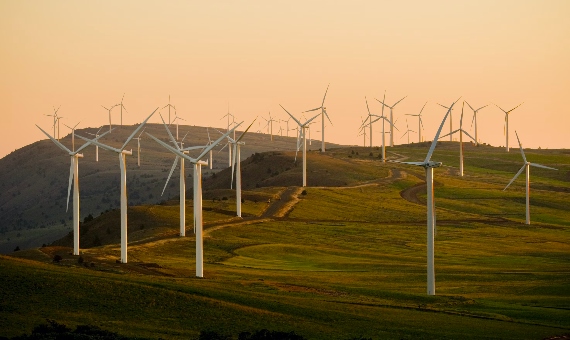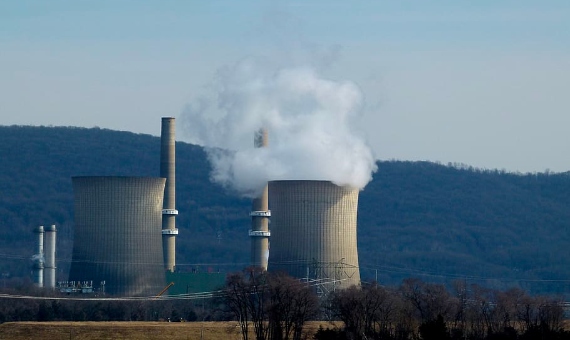When it comes to reducing greenhouse gas (GHG) emissions to tackle climate change, there are two competing ideas that dominate the public debate. One, we can all contribute to help solve the problem through our individual actions. Two, given that just over 100 companies are responsible for 70% of all emissions, mainly from the fossil fuel industry, placing the burden of the problem on households is a convenient smokescreen for large corporations. Of course, opinions are free, but data are not; at a minimum it is useful to have the latter to form the former. And when we delve into the details, we discover that the recipients of much of the energy produced by large companies are our homes. This means that the actions we take to tackle climate change will also involve how we use this energy in terms of quantity and quality.
When it comes to breaking down GHG emissions figures by source, it is easy to get lost in the forest of data depending on how they are presented. For example, according to the International Energy Agency—an intergovernmental body that brings together 30 OECD countries and other partners—industry as a whole accounts for more than 40% of global GHG emissions, but this estimate splits energy production between the different sectors to which it is destined. In other words, the energy sector is not separated from the rest in this calculation. If this is done, the result is that industry’s emissions fall to 20%, while energy generation accounts for 44%.

Thus, generating the energy we need to keep society running makes a massive contribution to global warming, and therefore this aspect of energy must be at the forefront of emission reduction efforts. But contrary to what one might think, the proportion of energy consumed by households is far from irrelevant compared to industrial activity: in the US, 20% of total emissions are due to residential energy use. In Europe, where according to the European Environment Agency energy generation is responsible for 40% of emissions, 26% of this total is accounted for by industry and 25% by households. In short, it can be said that the public as a whole contributes a volume of GHGs equivalent to that of industry.
Decarbonising energy production
The truth is that, if we add to the direct GHG emissions of households—through the use of fossil fuels such as natural gas, coal or diesel—the indirect emissions through the supply chains involved in the consumption of products and services, the total carbon footprint of households rises to 60% of global emissions on average, with variations from 40% in Japan or China to 80% in the US.
If we look only at energy, the indirect generation of GHGs by households occurs through the use of electricity. According to a recent study by the University of Michigan, adding direct and indirect contributions, energy consumption accounts for 25% of the emissions due to households in the US. By comparison, transportation of household members accounts for 30% of these total indirect emissions, slightly more than energy; but if only private vehicle use is considered, the figure is 23%. In other words, the average US household produces higher emissions from the energy consumed in the home itself than from automobile use.
The most urgent and necessary way to reduce this volume of emissions is on everyone’s mind, and it does not depend on individuals, but on governments and companies: decarbonising electricity production by replacing fossil fuel power plants with low-emission ones. According to data from various sources, coal is by far the most polluting source, emitting around 1,000 tonnes of CO2 equivalent (tCO2e) per gigawatt-hour (GWh) of energy produced. Liquid petroleum fuels are slightly below, at around 700 tCO2e per GWh, while natural gas emits around half as much as coal. Carbon capture and storage systems (CCUS) are proposed to mitigate emissions from these more polluting plants. However, these technologies are the subject of much debate about their feasibility, cost and potential benefit.

In fact, even with the implementation of CCUS technologies, studies show that renewable energy sources will remain a clearly preferable option: according to one study, in a projection to 2050 and assuming a reduction in emissions from fossil fuel plants with CCUS to a level of about 100 tCO2e, solar, wind and nuclear would still emit ten times less. Hydropower is also part of the low-emission renewables package, but the study penalises its carbon footprint because of emissions from organic matter decomposing in reservoirs, especially if there are large changes in water levels. Life cycle factors can worsen the figures for some energy sources. For example, this is the case for older solar photovoltaic due to the mining of materials and the construction of infrastructure and panels. Improvements in technology and manufacturing have significantly increased efficiency.
The complexity of including nuclear power
One particular case of ongoing controversy is nuclear energy, a source that has been supported by countries such as the US, France, China and others, but is often opposed by environmental groups. The European Union’s (EU) recent proposal to label nuclear energy as “green” has sparked protests from some countries and environmental organisations. The fact is that the Intergovernmental Panel on Climate Change (IPCC) and other UN bodies include nuclear among the forms of energy needed in an energy mix to achieve the goals of the 2015 Paris agreement to limit the global temperature increase to 1.5°C.
Bringing together several studies, the World Nuclear Association, the international industry association, estimates that nuclear energy over its entire life cycle produces on average around 30 tCO2e per GWh, higher than hydro and wind (26), but lower than solar (85). However, other independent experts put the lifecycle figure for nuclear in the range of 60 and even above 100, much higher than for solar. A recent study also suggests that countries investing in nuclear power are not reducing their emissions compared to those investing in renewables.
Of course, the diversity of energy sources affects the final price of electricity, and this in turn influences the choice of users where different options are available. In the EU, the cheapest electricity is produced by solar and wind power plants, with a generation cost of between two and eight euro cents per kilowatt-hour (kWh), while that generated by nuclear can reach almost 20 euro cents. But regardless of the possibility of choosing energy suppliers that use clean and renewable sources, there are also measures available to the consumer that can reduce the carbon footprint of households.

These measures have been repeated so often or are so obvious that everybody knows them: replacing incandescent light bulbs with LEDs, using efficient appliances, switching off or unplugging appliances instead of leaving them on standby, setting thermostats to the lowest acceptable temperature and, if possible, using a timer, improving thermal insulation and, in general, limiting electricity consumption to the minimum necessary. However, there are also some myths about reducing the carbon footprint of household energy. But above all, and given that electricity tariffs can vary throughout the day, users may wonder which times of use are the most appropriate for reducing emissions. There is no simple answer to this question, but some companies now provide information to consumers on when the carbon intensity of the energy produced is lowest.
In fact, it is worth bearing in mind that electricity prices can have a double-edged impact on emissions generation. For years, experts have shown that there is a rebound effect: when energy efficiency increases and prices fall, demand increases, which cancels out the efficiency gains. A study in Sweden showed that a 20% increase in efficiency paradoxically results in a 5% increase in CO2 emissions due to higher consumption. Similarly, an increase in household expenditure leads to a higher carbon footprint. Reducing the carbon footprint of households may therefore require more profound transformations in our way of life, according to some experts; for example, reducing housing space per capita and increasing population density to build low-carbon communities.
Myths about energy consumption
While measures to cut household energy consumption and therefore our carbon footprint may seem obvious in general, there can sometimes be some widespread confusion. For example, for years we have been using energy efficient compact fluorescent lamp bulbs (CFLs). They were once a good option over traditional incandescent bulbs, but have been largely superseded by LEDs, which are more expensive but much more efficient and longer lasting; according to Columbia University, CFLs waste 80% of their energy as heat, as well as containing mercury.
There is also confusion about the energy consumption of appliances and air conditioning. For example, contrary to popular belief, an efficient dishwasher uses less energy than washing dishes by hand with hot water. Nor is the need to switch appliances off or unplug them sufficiently appreciated: according to one estimate, the so-called “vampire energy” consumed by idle appliances can account for a quarter of household consumption. Finally, another widespread belief is that heat in the home is lost mainly through windows, when in fact good wall insulation is more important.
Comments on this publication